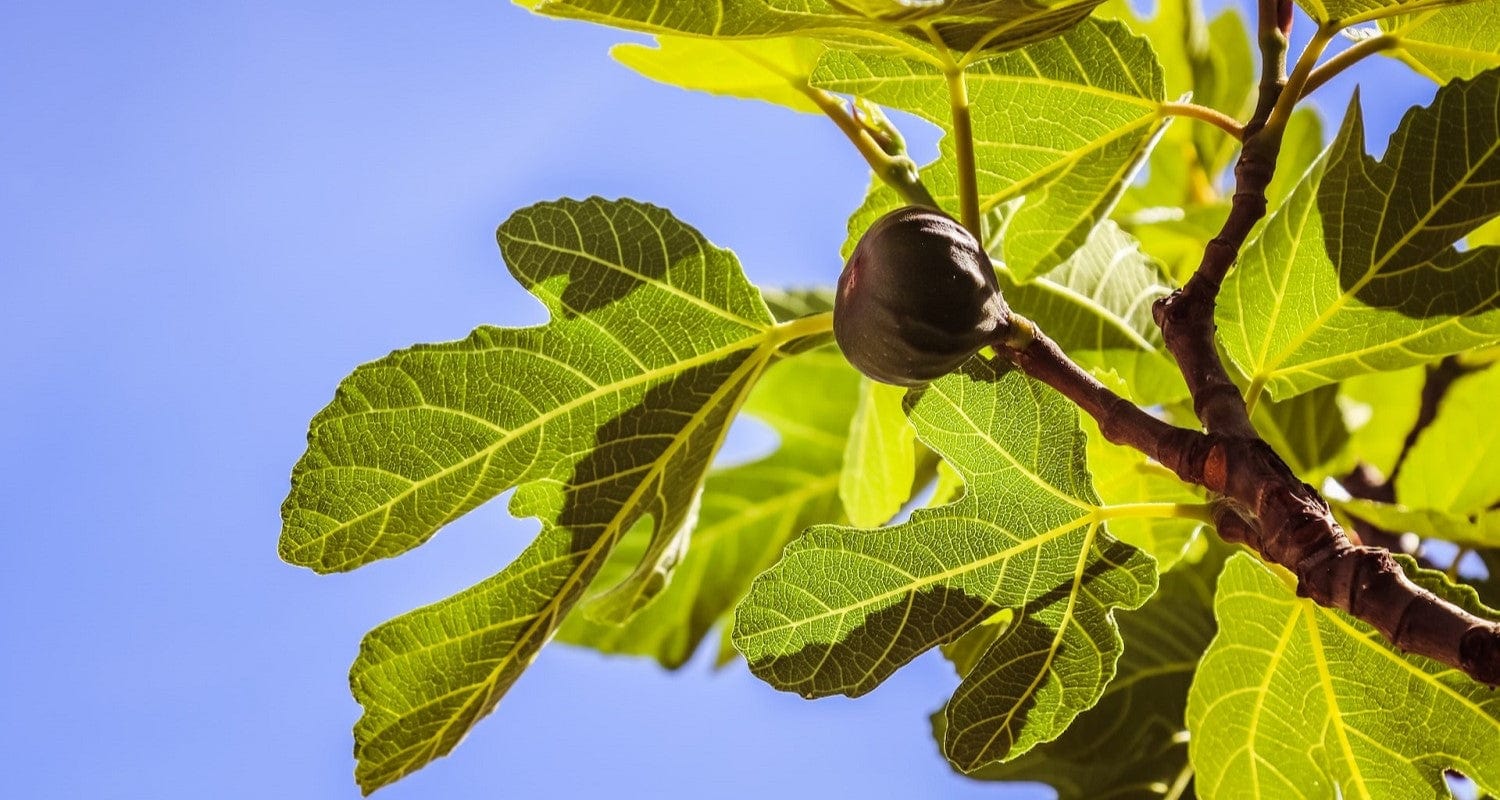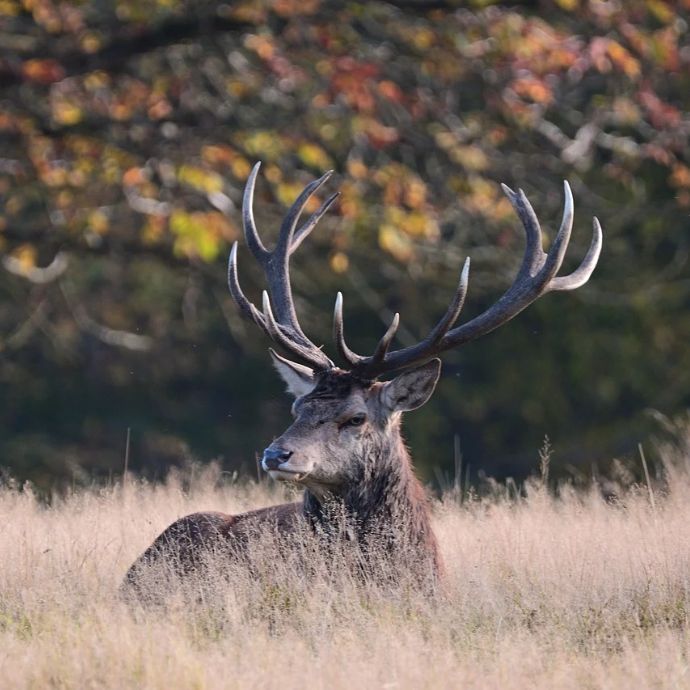Advice & Inspiration
What’s the Best Fig Tree for UK Gardens?

Widely grown in Mediterranean countries, fig trees are surprisingly well suited to growing in the UK. They actually prefer to be grown in pots and have attractive, scented, deep green lobed foliage, making them an ideal plant for a sunny, sheltered patio. They’re quicker to crop than many other fruit trees, and produce large numbers of soft, exquisitely sweet fruits which can be eaten fresh in salads and desserts, cooked or preserved.
Our tree grower Josh recommends figs as an easy tree for beginners - they’re naturally small and hardy and the fresh fruit is so much better than anything you can get in the shops. We asked Josh to choose his top fig tree varieties for every kind of garden, and also got some grower’s tips on how to look after them.
Jump to:
- Best for beginners
- Best for cold areas
- Best for sunny areas
- Heaviest cropping
- Best looking
- Best heritage variety
1. Best for beginners: Brown Turkey
Brown Turkey is Josh’s pick for beginners - it’s a compact variety which takes very little maintenance, has excellent cold hardiness and fruits reliably. It’s easy to grow on a patio, balcony or even indoors. The sweet, delicious figs are brown skinned with crimson red flesh inside and can be picked from August to September.
2. Best for cold areas: Brunswick
Brunswick fig trees are heavy croppers with large, pear-shaped, purple flushed green fruit. They’re naturally small and ideal for growing in containers. Even better, they’re particularly hardy and will cope with temperatures down to at least -5°C. Brunswick is particularly good for fan training and in a hot summer, will produce two crops in a single year.
3. Best for sunny areas: Rouge de Bordeaux
If you have a sunny, sheltered position in your garden, may we suggest Rouge de Bordeaux? It performs best in warmer southern conditions but can be grown in a greenhouse or conservatory in cooler areas. Rouge de Bordeaux produces attractive purple figs with richly flavoured red flesh that are highly sought after by chefs.
4. Best for heavy crops: Osborn’s Prolific
If you really love figs, go for the variety that produces so many that it’s got ‘prolific’ in its name. Osborn’s does well outdoors in the UK climate and can grow to 4m if left unpruned, so it’s a good choice for growing in open ground as well as in large pots. The medium sized fruits are purple-brown striped with amber colured flesh and you can guarantee there’ll be plenty of them for desserts, baking and even fig jam.
5. Best for looks: Panachée
Josh reckons the Panachée fig makes a great gift - it’s certainly hard to beat for looks, with its distinctive green and yellow striped fruits that give it its alternative name of ‘the tiger fig’. It also has an excellent heritage, dating back to 15th century France. The flesh is crimson red and has a hint of raspberry in the flavour - best eaten fresh, the fruit are also excellent for drying.
6. Best heritage variety: Madeleine de Deux Saisons
Madeleine can trace its pedigree back to Versailles during the reign of Louis XIV, but has proved much more popular and enduring than the French monarchy. It’s a very vigorous grower that, as the name suggests, produces two crops per year of golden, pink-flushed fruit with a sweet red centre. Madeleine is hardy, heavy cropping and ideal for pots.
How to get the best from your Fig tree
Position
Fig trees grow best in large pots - position them against a wall in a warm, sheltered area and re-pot them every 2-3 years. If growing figs in the ground, you will need to use rubble or submerged paving slabs around the tree to restrict root growth and promote fruiting. A position in full sun is best, although most varieties will cope with a little light shade in the afternoon.
Pruning
Fig trees are vigorous and need pruning annually, especially if you’re growing them in pots. Remove dead or weak branches in winter and prune lightly into shape in the summer. Fig trees grown outdoors can be trained into a fan shape against a wall or fence, to create light and space for the fruits to develop. Never prune fig trees in Spring as they can bleed sap, weakening the tree.
Feeding
Feed your fig trees weekly with tomato food once the fruits start to appear. Your trees will also benefit from an annual mulch of manure or well rotted compost to discourage weeds and add nutrients to the soil.
Watering
New fig trees may need to be watered more frequently until the root system is established, but after that they are drought tolerant and will only need watering in hot, dry weather. Trees in pots will need more watering and shouldn’t be allowed to dry out. Keep the soil consistently moist and water them every 10-14 days throughout the summer.
Harvesting
Figs are ready to harvest when they’re soft, the neck of the fruit starts to wilt and the fruits hang down. This is typically between late summer and towards autumn. Because ripe figs are quite delicate and bruise easily, you should always pick them carefully and handle as little as possible. Wait until they’re fully ripe, as they won’t ripen any further once picked. To pick your figs, gently pull or cut the fruit from the stem, leaving some of the stem attached if you can, as this makes them last longer.
Winter Protection
In colder areas, your fig trees will need protecting from frosts over winter - this is particularly important for young trees. Cover the branches with horticultural fleece or bubble wrap or if your tree is in a pot, move it indoors to a shed or greenhouse. Move it back outside in spring, and give your tree a good mulch to stimulate new growth.






























